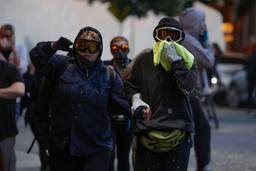Nanotechnology, one of the fastest growing industries in history, is a major threat to human health and the environment. Or not. The fact is, when it comes to nanotech, we don’t have any idea what the facts are.
Nonetheless, manufacturers are rushing ahead to add inadequately tested particles, one nanometer to 100 nanometers in size, to a wide and growing array of consumer products. A nanometer is one billionth of a meter, or the length of a fingernail as it grows in a second.
Manipulated at the level of atoms and molecules, these radical particles have fundamentally different physical, chemical and biological properties from the matter from which they were created. Benign materials may become toxic, while their nano-scale allows them to penetrate cells, even breaching the blood-brain barrier.
Currently, nanoparticles of carbon, silver, titanium, zinc and other materials are routinely incorporated into sun screens and cosmetics, sporting goods, washing machines, refrigerators, baby products, stain- and wrinkle-resistant fabrics, food, food packaging and odor-destroying products, including air fresheners and shoe liners.
In addition to “New!” and “Improved!” the technology promises enormous social good. Nanoparticles have the potential to increase the efficiency of solar panels or act as molecular sponges, absorbing toxins and reducing air pollution by, say, capturing mercury from stack emissions. Medical possibilities include precise delivery of cancer drugs and coatings that keep surgical theaters bacteria-free. Nanotech could also revolutionize materials in electronics, optics and quantum computing.
But it could also be dangerous.
The nonprofit Consumers Union admonishes that “widespread, unregulated use of many nanoengineered materials will bring … severe, irreversible, unintended consequences.” Preliminary studies have linked them to DNA damage and unpredictable inflammatory and immune responses. Britain’s Royal Society warns that nanotubes “are structurally similar to asbestos fibers.” Rats exposed to nanoparticles have shown tumor-related effects, according to the journal Particle and Fibre Toxicology, which questions whether nanoparticles in sunscreen can cause systemic effects if absorbed through skin. Certainly, they end up in water, where early evidence suggests toxicity to fish.
By 2015, the annual global market for nano-related goods and services will top $1 trillion, according to the National Science Foundation.
The U.S. government invested $1.4 billion in nanotech’s research and development last year. But with only 1 percent to 4 percent of that figure allocated for risk assessment, the facts essential to making public policy and personal choices are scarce.
While industry crashes forward, the Environmental Protection Agency (EPA) and the Food and Drug Administration are in a slow-motion dither over testing procedures, regulation and labeling. “By the time monitoring catches up to commerce,” says Ian Illuminato of Friends of the Earth, “the damage will already have been done.”
Funding and authority are likely factors in the glacial bureaucratic pace, but so, too, are agencies’ relationships with industry and industry’s relationship with the administration. The EPA describes nanotech as presenting “new opportunities” and “possibly unforeseen environmental issues.” “Opportunities” are a given, but dangers are euphemized as “issues” and only possible.
A new Samsung washing machine that disperses 100 quadrillion nanosilver particles per load illustrates the regulatory morass. Under the latest EPA shift, products like the washing machine don’t need to prove they are environmentally safe as long as they don’t claim to kill germs. In the even less regulated field of cosmetics, the FDA has no authority to require, or even access, pre-market safety data, and can act only after a public disaster.
“We are part of an experiment,” says George Kimbrell, staff attorney with the nonprofit International Center for Technology Assessment. He says he hopes strong, early pressure for oversight will make “nano a window to renegotiate a social contract” that puts marketing on hold until safety is documented. “With biotech, that window came and passed.” But neither blind faith in technology nor dumb panic will prop up the opening long enough to get it right this time.
We need answers based on facts:
How will we monitor, regulate, test and label nanotech?
How will nanoparticles affect workers with higher exposures?
Will the nanoparticles kill good bacteria in fish, wildlife and us?
Promote antibiotic resistance?
Will they bio-accumulate?
Trigger disease or tumors?
What will happen to the nanoparticles when the material into which they are incorporated is junked?
And what about classified information on much of the $600 million that went to military applications?
Don’t know the answers to those questions? You’re in good company.
No one does.









